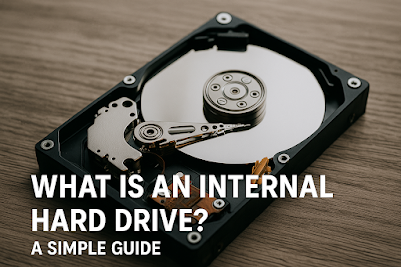What Is RFID? A Beginner’s Guide to Smart Tracking Technology
Radio Frequency Identification (RFID) is one of the most transformative technologies in the modern era of logistics, retail, healthcare, and supply chain management. As an automatic identification method, RFID utilizes radio waves to track and identify objects, animals, or people, offering greater efficiency, accuracy, and visibility across various industries.
Understanding RFID Technology: The Basics
RFID is a system composed of three core components: RFID tags, RFID readers, and a data processing system. This setup allows for wireless communication between objects without direct contact or line-of-sight requirements.
RFID Tags
These are small electronic devices that consist of a microchip and an antenna. RFID tags can be:
Passive – No internal power source; powered by the RFID reader.
Active – Contain a battery; used for longer-range applications.
Semi-passive – Battery-assisted but only used to power the microchip, not the communication.
RFID Readers
RFID readers emit radio signals that activate nearby tags. Once activated, the tag transmits its stored data, which the reader collects and sends to a database.
How RFID Works in Real-Time Applications
The RFID system operates by sending out an interrogating radio signal to detect tags within range. Once the tag is powered (passively or actively), it transmits data such as:
Unique Identifier (UID)
Product ID
Location data
Timestamp
The reader captures this data, which is then analyzed and stored in an enterprise resource planning (ERP) or inventory management system.
Types of RFID Systems
Low-Frequency (LF) RFID
Range: Up to 10 cm
Frequency: 125 – 134 kHz
Use cases: Animal tracking, car immobilizers, and access control
High-Frequency (HF) RFID
Range: Up to 1 meter
Frequency: 13.56 MHz
Use cases: Contactless payments, library book tracking, and smart cards
Ultra-High-Frequency (UHF) RFID
Range: Up to 12 meters or more
Frequency: 860 – 960 MHz
Use cases: Supply chain logistics, apparel tracking, and asset management
Microwave RFID
Frequency: 2.45 GHz
Range: Comparable or higher than UHF
Use cases: Real-time location tracking (RTLS), toll collection systems
Applications of RFID Across Industries
Retail and Inventory Management
RFID tags are used to automate stock-taking, loss prevention, and supply chain visibility. Real-time updates help in restocking and demand forecasting.
Improved inventory accuracy up to 99%
Faster checkout with RFID-enabled self-service systems
Enhanced customer experience via smart fitting rooms
Healthcare and Pharmaceuticals
RFID ensures patient safety, asset tracking, and inventory control for medical supplies and drugs.
RFID wristbands for patient identification
Tracking high-value medical equipment
Monitoring expiration dates of pharmaceuticals
Logistics and Supply Chain
With RFID-enabled logistics, companies streamline shipping, receiving, and warehousing operations.
Real-time tracking of containers and pallets
Faster loading and unloading processes
Reduced theft and shrinkage
Automotive Industry
Car manufacturers employ RFID for tracking parts, vehicle assembly, and quality control.
Just-in-time (JIT) manufacturing processes
Vehicle identification and keyless entry systems
Access Control and Security
RFID is essential in identity verification, access control systems, and secure environments.
Contactless smart cards and badges
Parking access and vehicle authentication
Secure entry to buildings and facilities
Benefits of RFID in Modern Business
Increased Efficiency: Speeds up data collection and reduces manual labor.
Enhanced Accuracy: Minimizes human errors in tracking and documentation.
Real-Time Data: Offers immediate access to location, status, and usage.
Improved Security: Tracks movement of assets and people in restricted areas.
Cost Savings: Lowers operational costs over time through automation and accuracy.
Challenges and Considerations in RFID Implementation
While RFID offers powerful advantages, organizations should be mindful of:
Initial Setup Costs: Tags, readers, and system integration can be expensive.
Interference Issues: Metallic environments or liquids may hinder performance.
Privacy Concerns: In retail and healthcare, data privacy must be ensured.
Global Standards: Need for regulatory compliance across countries and industries.
Proper planning, system design, and testing are essential for a successful RFID deployment.
Future Trends in RFID Technology
As industries embrace digital transformation, RFID is evolving to meet new demands:
Integration with IoT: Seamless connectivity with smart devices for richer data.
Blockchain + RFID: Securing supply chain data through immutable ledgers.
AI-Driven RFID Analytics: Predictive insights and process automation.
Flexible and Printable Tags: Enabling cost-effective deployment on a wide range of surfaces.
The future points toward ubiquitous RFID adoption, from smart cities to intelligent manufacturing ecosystems.
Conclusion: RFID’s Role in a Smart, Connected World
RFID technology has transcended traditional tracking methods to become a cornerstone of smart logistics, retail, healthcare, and security infrastructures. Its ability to offer real-time visibility, automated accuracy, and scalable integration makes it a vital asset in today’s data-driven environments. As the digital landscape evolves, RFID continues to lead the charge toward intelligent, responsive systems that are faster, safer, and more efficient.


Comments
Post a Comment